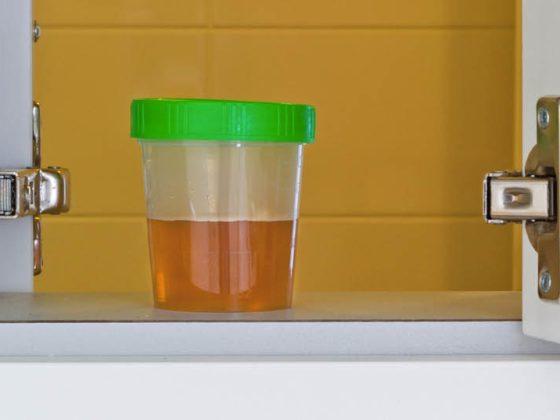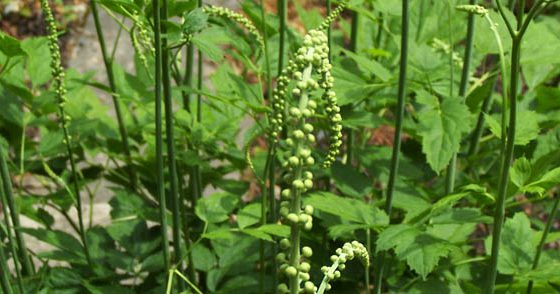If a patient suffers from chronic inflammation of the mucous membranes in the nose and sinuses, it is important to look closely. Especially the polypous variant could be associated with severe non-allergic bronchial asthma. At the postgraduate course of the Swiss Society of Allergology and Immunology (SGAI) in Grindelwald, the focus was on the different subtypes of chronic rhinosinusitis and their targeted therapy.
Across Europe, more than 10% of the population suffers from chronic rhinosinusitis. The primary care physician as the first point of contact is of central importance in this condition, not only because it is extremely common, but because of the comorbidities observed, most notably the association with severe bronchial asthma.
The clinical diagnosis of chronic rhinosinusitis is based on the typical symptoms of nasal obstruction, secretion, olfactory dysfunction, and headache or facial pain. Nonspecific complaints such as sore throat, lassitude, subfebrile temperature, bad breath, and sleep disturbances are also reported. Symptoms must be prevalent for more than twelve weeks to be classified as chronic.
Chronic rhinosinusitis is underestimated both in its prevalence and its consequences, reported Prof. Claus Bachert, MD, clinic chief of the Department of Otolaryngology (ENT) at Ghent University, Belgium. In adult chronic rhinosinusitis, a polypy or non-polypy variant of diffuse mucosal swelling of the paranasal sinuses occurs by different routes (see Gene classification of CRS with or without nasal polyps). In the non-polypy form, fibrosis and collagen deposition occur, whereas chronic rhinosinusitis with polyps is more characterized by edema. At the chemokine level, both forms are also controlled by different cytokines.
Asthma and nasal polyps go hand in hand
The very form associated with nasal polyps seems to be divisible into different “endotypes”. This can be used, for example, to better distinguish those patients who benefit from surgical treatment in the long term from those who are at high risk of recurrence after surgery, the expert explained.
The overall understanding of chronic rhinosinusitis has changed: A disease that was previously defined by symptoms and disease duration is increasingly presenting itself as a heterogeneous clinical picture, the differentiation of which is becoming possible at the immunological level on the basis of the cytokine profile. Accordingly, more differentiated approaches to therapy are also emerging. Chronic rhinosinusitis appears to be a spectrum of diseases that cannot be reliably distinguished clinically. The investigation of specific biomarkers and inflammatory mediators plays an increasingly important role in further differentiating the heterogeneous disease picture. In polyposis rhinosinusitis, interleukin-5 emerges as the most important cytokine.
ASA intolerance?
For the primary care provider, the main message is that patients with chronic rhinosinusitis often also have lower respiratory tract disease. The association with asthma and allergic rhinitis is already known. According to new findings, chronic rhinosinusitis without allergic rhinitis correlates with the occurrence of late-onset bronchial asthma, the non-allergic asthma. This is characterized not only by an onset later in life, but by a high rate of eosinophils in the blood or sputum. This form of asthma is commonly found in patients with polyposis rhinosinusitis and is also associated (in Europe) with aspirin intolerance syndrome. Intolerance to acetylsalicylic acid in asthmatics with nasal polyps is known as aspirin triad or Widal’s disease. “In contrast to patients in Belgium, we could not find an association between interleukin-5-positive polyps, asthma, and ASA intolerance in Chinese patients in a study at Chengdu University,” Prof. Bachert reported.
Staphylococci play a role as superantigens with
What is the relationship between asthma and nasal polyps? The hypothesis is that staphylococci can release various enterotoxins in the nose, which in turn act as superantigens to activate B and T cells in the nasal mucosa. In a large proportion of patients in Europe, the nose is colonized with Staphylococcus aureus. If nasal polyps are added, phagocytosis of staphylococci becomes more difficult, even more so if smoking or viral infections weaken the basement membrane. The consequence: a strong production of specific IgE antibodies directed against superantigens. These have only recently been associated with bronchial asthma, and with the severe, non-allergic, late-onset form.
While patients with chronic rhinosinusitis and asthma often present with polyps as well, chronic polypous rhinosinusitis in turn seems to comprise a heterogeneous group of disease entities, with varying degrees of risk of bronchial asthma. Especially in the group of patients with severe bronchial asthma, every second patient also reports sinus disease.
Targeting interleukin-5
In chronic polyposis rhinosinusitis, eosinophils characterize the inflammation. Excessive amounts of IgE are produced in the nasal mucosa. Characteristic cytokine is interleukin IL-5; an IL-5-positive polyp indicates asthma comorbidity. These patients in particular have a high risk of recurrence after surgical removal of the polyps. In contrast, chronic rhinosinusitis without polyps seems to be more associated with fibrosis and collagen deposition in the paranasal sinuses.
Medicinal approaches
Containing the inflammation is the primary therapeutic goal. In addition to nasal corticosteroids, which are approved in this indication, specific strategies directed against eosinophil infiltration are currently under investigation: The interleukin-5 monoclonal antibody mepolizumab, previously used for patients with severe, steroid-resistant asthma with concomitant eosinophilia, is a promising candidate; as is the anti-IgE antibody omalizumab, which appears to be effective not only in allergic asthma. In a pilot study in patients with nasal polyps and asthma, in which one in two patients had allergic asthma, therapy with omalizumab improved symptoms of both upper and lower airways, independent of existing atopy. First results in the reduction of nasal polyps as well as in the improvement of the ability to smell are promising with both biologics, summarized Prof. Bachert.
Antibiotics, on the other hand, are reserved for the case of acute exacerbation: A combination therapy of doxycycline and a corticosteroid brings good results.
Anka Stegmeier-Petroianu, M.D.
Source: “Chronic rhinosinusitis: Role of allergy and subform-adapted therapy”, lecture at the Postgraduate Course of the Swiss Society of Allergology and Immunology (SGAI), January 25, 2014, Grindelwald.
Literature:
- Bachert C, et al: Chronic rhinosinusitis and asthma: novel understanding of the role of IgE “above atopy”. J Intern Med 2012 Aug; 272(2): 133-143. doi: 10.1111/j.1365-2796.2012.02559.
HAUSARZT PRAXIS 2014; 9(3): 30-32











